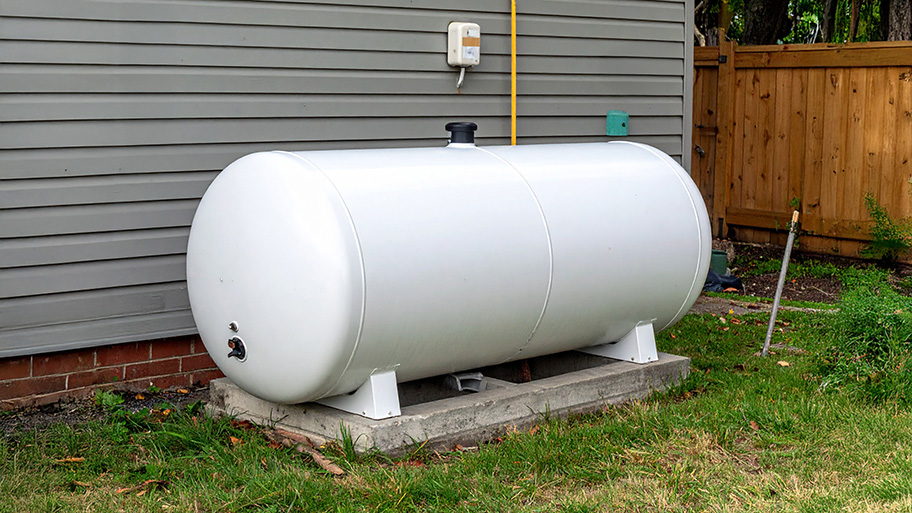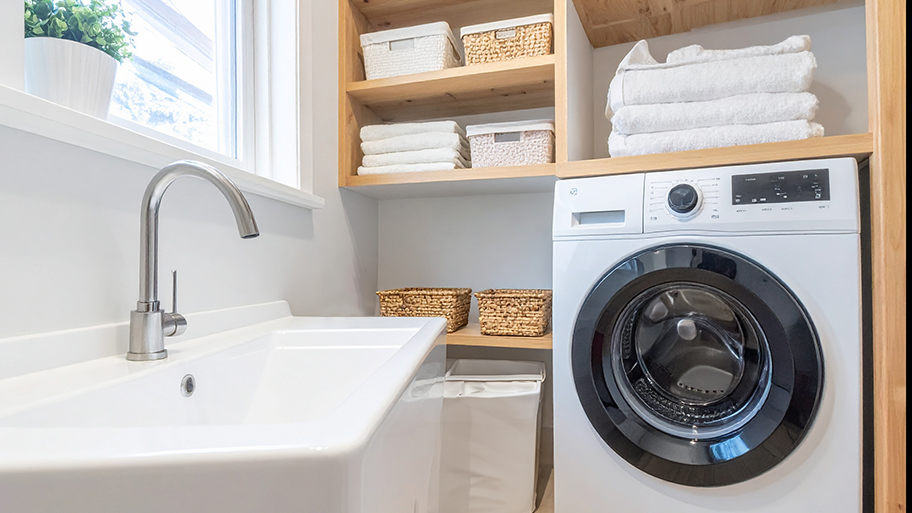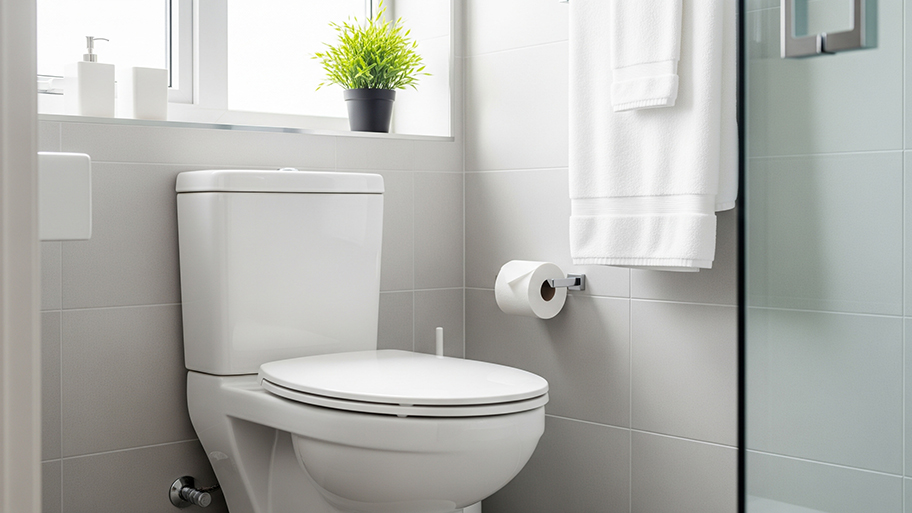
The average propane tank costs between $600 and $2,500, depending on the size, location, and more. Our expert guide explores all the factors.
Water tank cost averages $2,349, with homeowners paying $750 to $5,200, depending on tank size, material, installation type, and location


Tank size and material are the biggest water tank cost drivers.
Site prep can raise total project costs if your installation calls for excavation, grading, or other work.
Permits and local regulations may impact your water tank cost.
Choosing the right tank can improve efficiency and home value.
This article was created using automation technology and thoroughly fact-checked and edited by an Angi Editor in accordance with our AI policy.
Water tank cost averages $2,349, with most homeowners spending an average of $1,611 to $3,138 with installation. Prices vary based on tank size, material, and whether the tank is above or below ground. Expect to pay $0.50 to $4 per gallon, depending on your sizing, installation complexity, and local labor rates.
Several factors directly impact the final water tank cost. Understanding these can help you plan and budget more accurately.
Ranging from $0.5 to $4 per gallon, tank size is the first step in determining your total water tank cost. Tank capacity, measured in gallons or liters, directly affects both material and installation expenses.
Smaller tanks are more affordable and easier to install, while larger tanks require more site preparation and structural support. Selecting the right size depends on your household’s daily water needs, irrigation requirements, and whether you want emergency water storage. Oversized tanks can increase costs unnecessarily, while undersized tanks may not meet your needs. Large tanks might also require reinforced foundations or more complex plumbing.
Water tank type has a major impact on both upfront and ongoing costs. There are several types of tanks available, each suited for different needs and installation sites.
Above-ground tanks are the simplest and least expensive to install, while underground tanks require excavation and cost more due to labor and materials. The right type depends on your climate, available space, and intended use.
| Tank Type | Cost Range |
|---|---|
| Rain barrel | $200–$2,500 |
| Above-ground cistern (wet) | $5,000–$28,500+ |
| Above-ground cistern (dry) | $2,000–$10,000 |
| Underground cistern | $6,500–$24,000 |
The material of your water tank affects its cost, durability, and maintenance requirements. Common options include polyethylene, fiberglass, concrete, steel (galvanized or stainless), and bladder tanks. Each has its own benefits and drawbacks, from lifespan and ease of repair to environmental impact.
Plastic tanks are affordable and lightweight but have a shorter lifespan. Steel and concrete tanks are long-lasting but cost more and require more support. Fiberglass offers a good balance of strength and weight. Consider safety, local climate, and intended use when choosing a material.
| Material | Cost Range |
|---|---|
| Fiberglass | $2,000–$6,000 |
| Concrete | $2,000–$10,000 |
| Steel | $3,000–$12,000 |
| Polyethylene | $2,000–$6,000 |
Water tank installation involves skilled professionals such as plumbers, general contractors, and sometimes excavation specialists. Labor rates range from $45 to $150 per hour, depending on your region and the complexity of the installation. General contractors and plumbers may charge a flat fee based on your project's specifics rather than an hourly rate.
The specific location of your tank on your property also impacts installation cost. Tanks installed in basements, rooftops, or tight spaces require more labor and specialized equipment. Underground tanks need excavation and waterproofing, while above-ground tanks may need a concrete pad or structural reinforcement.
If your site is sloped or far from the water source, expect additional costs for grading, trenching, or longer plumbing runs. Accessibility for delivery trucks and equipment is another key factor, especially for large or heavy tanks.
Most municipalities require permits for water tank installation. Inspections may be required before and after installation, adding extra time and cost. Failing to obtain proper permits can result in fines and may void insurance coverage.
Routine maintenance is essential to maximize your tank’s lifespan. Cleaning and inspections average $740 per year, depending on tank type and material, not including costs for repairs or component replacements.

Sometimes, repairing an existing water tank is possible, but other circumstances may warrant replacing your water tank. Recognizing the signs that your water tank is ready for replacement can save you money and headaches.
Common repairable issues include leaks, minor rust, low pressure, or valve problems. If your tank is nearing the end of its lifespan, has extensive damage, or is made from outdated materials, replacement is the smarter long-term investment. Warranty status also plays a role—some repairs may be covered, while others are not. Use the 50% rule: If repair costs approach half the price of a new tank, replacement is recommended. While repair is less expensive in the short term, replacement offers better value if your tank is old or repeatedly failing.
Some homeowners consider installing a water tank themselves to save on labor costs. DIY is feasible for small, above-ground tanks if you have basic plumbing skills and access to the right tools. However, large or underground tanks are best left to professionals due to excavation, code compliance, and safety concerns.
DIY installation involves the cost of materials, tools, and possibly equipment rentals. While you can save on labor, mistakes can result in leaks, code violations, or safety hazards. Hiring a local plumber for water tank installation can prevent costly errors and set your system up for long-term performance.
A water tank can increase your home’s value and appeal, especially in areas with water shortages or drought risk. Installing a water tank may reduce your utility bills if you use it for rainwater harvesting or irrigation, offering long-term savings. Eco-conscious buyers and those seeking greater resilience in emergencies see water tanks as a valuable upgrade.
Water tanks can improve safety by providing an emergency supply for fire protection or outages. Functionality, convenience, and universal design are important, as is the tank’s placement and integration with landscaping. A properly installed tank adds more value than one that is poorly placed or visually intrusive.
Use these budgeting tips to keep save on your water tank costs:
Get multiple quotes from licensed installers for best pricing.
Choose the right tank size for your needs to avoid overspending.
Opt for standard tank models and materials.
Schedule installation during off-peak seasons for potential discounts.
Perform basic site prep or old tank removal yourself if possible.
Consider rebates or incentives for water conservation systems.
Maintain your tank regularly to prevent costly repairs or replacements.
Home is the most important place on earth, which is why Angi has helped more than 150 million homeowners transform their houses into homes they adore. To help homeowners with their next project, Angi provides readers with the most accurate cost data and upholds strict editorial standards. We survey real Angi customers about their project costs to develop the pricing data you see, so you can make the best decisions for you and your home. We pair this data with research from reputable sources, including the U.S. Bureau of Labor Statistics, academic journals, market studies, and interviews with industry experts—all to ensure our prices reflect real-world projects.
Want to help us improve our cost data? Send us a recent project quote to [email protected]. Quotes and personal information will not be shared publicly.
From average costs to expert advice, get all the answers you need to get your job done.

The average propane tank costs between $600 and $2,500, depending on the size, location, and more. Our expert guide explores all the factors.

The cost to add plumbing to a detached garage depends on several factors, including the type of plumbing and the garage's distance from your home.

A leaky faucet can lead to costly water damage and a lot of wasted water. Learn how much it costs to fix a leaky faucet based on type, part and labor.

Learn how to remove a bathtub drain for cleaning or replacing, whether you’ve got a simple toe-touch stopper or a more complicated trip-level model.

Find the right type of toilet tank flapper for your bathroom, including rubber, silicone, standard, adjustable, and dual flush.

Finding frozen pipes involves using all of your senses to listen for, smell, and see the signs. Keep reading to learn how to find frozen pipes in your home.